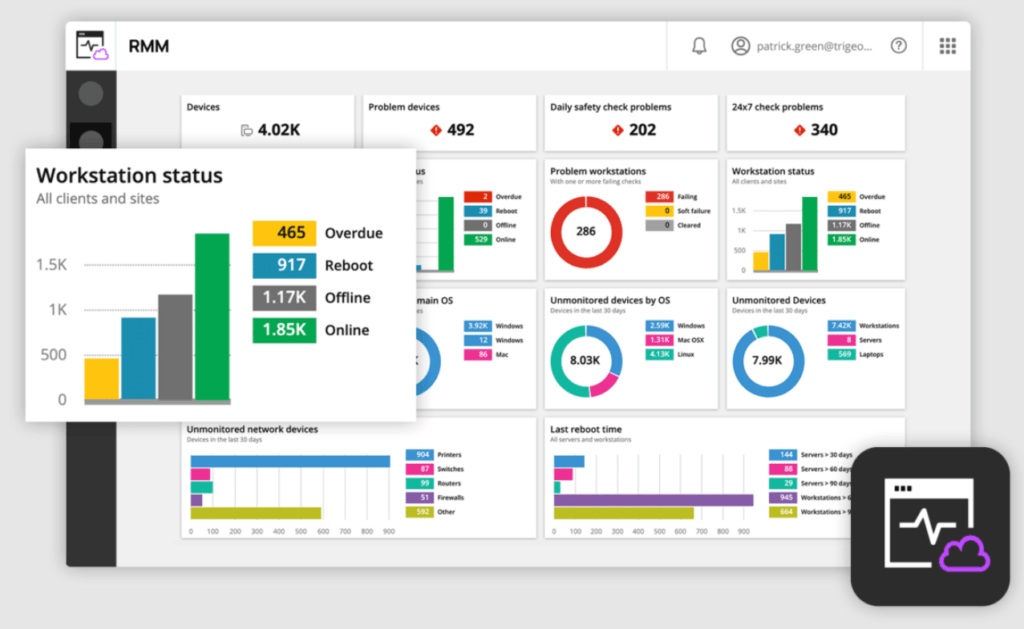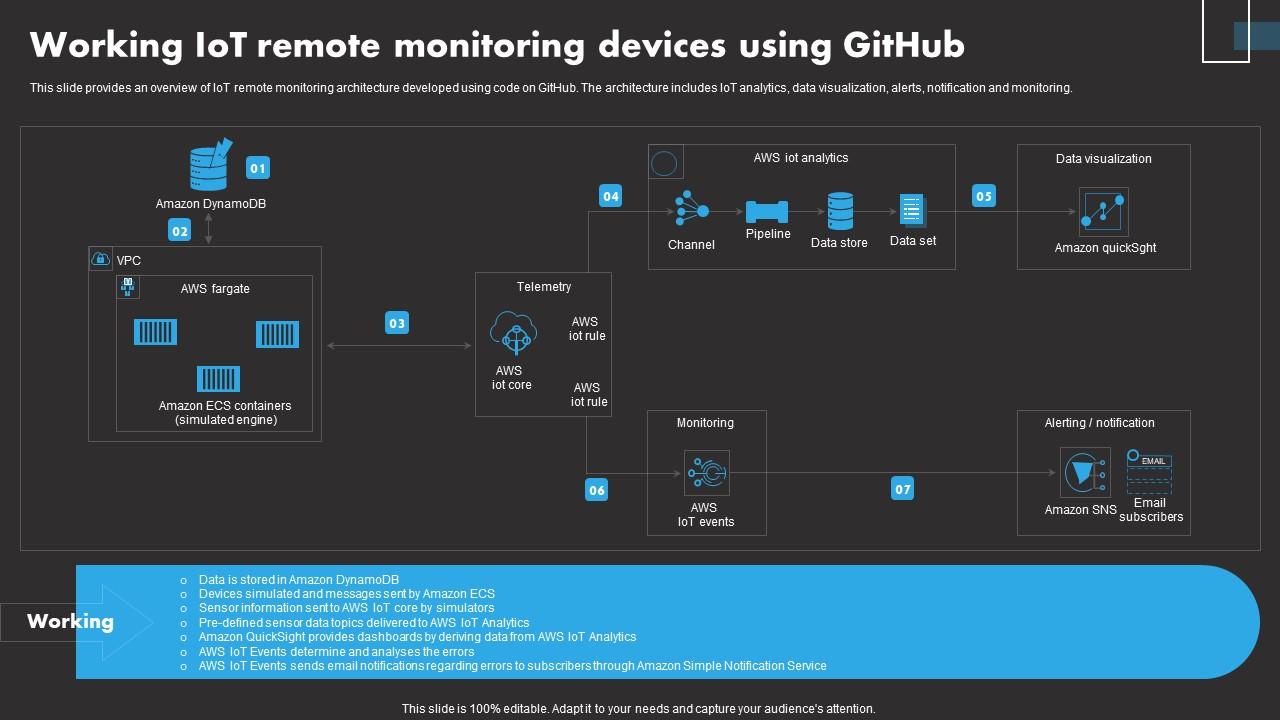RMM and IoT are transforming the way we interact with technology, creating a synergy that enhances efficiency and connectivity across various industries. With the rapid advancement of the Internet of Things, Remote Monitoring and Management (RMM) tools have emerged as essential components that facilitate seamless integration, device oversight, and proactive management. This collaboration allows businesses to harness data in real-time, improving operational capabilities and driving innovation.
As organizations embrace IoT ecosystems, the significance of RMM becomes increasingly apparent. From healthcare to manufacturing, numerous sectors are experiencing the advantages of this partnership. The integration not only streamlines operations but also enhances security and reliability, ensuring that devices operate optimally in complex networks.
Overview of RMM and IoT

In today’s fast-evolving technology landscape, Remote Monitoring and Management (RMM) and the Internet of Things (IoT) play crucial roles. These technologies not only empower businesses to enhance operational efficiency but also facilitate a deeper understanding of system performance and user interaction. As organizations seek to optimize their processes and improve service delivery, the synergy between RMM and IoT becomes increasingly significant.RMM serves as a pivotal tool for managing and monitoring IT systems remotely, while IoT encompasses a vast network of interconnected devices that communicate and share data.
The integration of RMM within IoT ecosystems amplifies the potential of both technologies, allowing for real-time data collection, analysis, and actionable insights. This collaboration enables businesses to respond to issues swiftly, streamline operations, and enhance user experiences.
Industries Benefiting from RMM and IoT Collaboration
A variety of industries are harnessing the power of RMM and IoT to drive innovation and efficiency. The integration of these technologies can transform traditional practices and yield significant improvements in performance. Below are some of the key sectors experiencing these benefits:
- Healthcare: The healthcare industry utilizes IoT devices for remote patient monitoring, allowing healthcare providers to track vital signs and health metrics in real-time. RMM solutions help manage these devices, ensuring they are functioning correctly and securely. This integration leads to improved patient outcomes and reduced hospital visits.
- Manufacturing: In manufacturing, IoT sensors on machinery can monitor performance and detect anomalies. RMM tools enable manufacturers to manage these systems remotely, facilitating predictive maintenance strategies. This approach minimizes downtime and extends the lifespan of equipment, resulting in cost savings.
- Smart Cities: Urban areas are increasingly deploying IoT solutions for traffic management, waste management, and public safety. RMM systems assist in monitoring the performance of these interconnected devices, ensuring they operate optimally. This synergy enhances the quality of life for residents and promotes sustainable urban development.
- Transportation and Logistics: The transportation sector employs IoT for fleet management and cargo tracking. RMM tools allow logistics companies to manage their assets remotely, track vehicle performance, and optimize routes. This leads to improved efficiency and reduced operational costs.
“The fusion of RMM and IoT technology presents a transformative opportunity for businesses to enhance operational efficiencies and improve customer experiences.”
Exploring voip pc Unleashing the Power of Communication can revolutionize how you connect with others, whether for personal or professional use. By utilizing VoIP on your PC, you can benefit from high-quality voice calls and a range of features that traditional phone systems can’t provide. Embrace the future of communication and discover how easy it is to stay connected.
Through these examples, it is evident that the collaboration between RMM and IoT is not only beneficial but essential for organizations looking to thrive in an increasingly connected world. As these technologies evolve, their integration will continue to reshape industries and redefine best practices.
Implementing voip linux A Comprehensive Guide to Implementation can significantly enhance your communication infrastructure. With its open-source nature, Linux-based VoIP solutions offer flexibility and cost-effectiveness for businesses. This guide provides insights into the setup and management of VoIP systems, ensuring you can leverage the full potential of voice communication technology.
Benefits of RMM in IoT Deployments

The integration of Remote Monitoring and Management (RMM) tools within Internet of Things (IoT) ecosystems presents a transformative opportunity for organizations. By leveraging RMM capabilities, businesses can streamline operations, enhance security, and improve overall device performance across their IoT deployments. The following benefits illustrate how RMM optimizes the management of IoT devices and applications.RMM tools significantly enhance device management and monitoring, providing organizations with real-time insights and control over their IoT infrastructure.
This capability is crucial as the number of interconnected devices continues to grow, making effective oversight more challenging. RMM solutions facilitate proactive maintenance, timely updates, and effective troubleshooting, ultimately leading to better operational efficiency.
Key Advantages of RMM in IoT Environments
The advantages of implementing RMM tools in IoT settings are multifaceted. Below is a table that Artikels some of the primary benefits:
| Benefit | Description |
|---|---|
| Real-time Monitoring | RMM provides continuous oversight of device performance, enabling immediate detection of issues and mitigating downtime. |
| Automated Updates | Automated patch management ensures that all devices are running the latest software, reducing vulnerabilities and improving security. |
| Centralized Management | A single platform allows for streamlined management of multiple devices, simplifying the administrative overhead associated with IoT deployments. |
| Enhanced Security | RMM tools provide security features such as encryption, access controls, and compliance monitoring to protect sensitive data from breaches. |
| Cost Efficiency | By automating routine tasks and minimizing downtime, RMM contributes to lower operational costs and improved ROI in IoT initiatives. |
| Data Insights | The analytics capabilities of RMM tools drive actionable insights, helping organizations to make informed decisions based on device performance and usage patterns. |
RMM tools not only streamline operations but also empower organizations with the insights required for strategic decision-making in IoT deployments.
Challenges in Implementing RMM with IoT

Integrating Remote Monitoring and Management (RMM) with Internet of Things (IoT) technologies presents a dynamic yet complex landscape. While the synergy between RMM and IoT offers substantial benefits, it also introduces a variety of challenges that organizations must navigate effectively. Understanding these obstacles is crucial for successful implementation and operational efficiency in interconnected environments.
Integration Complexity
The integration of RMM and IoT technologies often encounters significant technical hurdles. Businesses may face challenges in aligning the existing IT infrastructure with IoT devices and platforms, which can vary in protocols and communication standards. This divergence can lead to compatibility issues and increased costs in terms of system adaptation and enhancements. To elaborate, the following points highlight the integration complexity:
- Varied Communication Protocols: Different IoT devices utilize distinct communication protocols, creating barriers to seamless data transfer and monitoring.
- Data Silos: Information may remain trapped within specific devices or platforms, limiting the overall visibility and analysis across the network.
- Scalability Challenges: As IoT deployments grow, scaling RMM solutions to monitor and manage more devices can complicate system management.
Security Concerns
Security is a paramount concern when implementing RMM within IoT environments. The proliferation of IoT devices increases potential vulnerabilities, making systems more susceptible to cyber threats. RMM applications, which require extensive access to devices and networks, can serve as attractive targets for attackers.Key security concerns include:
- Unauthorized Access: Weak authentication mechanisms can allow malicious actors to breach RMM systems, potentially compromising sensitive data.
- Data Breaches: The transmission of sensitive information over the internet can expose organizations to risks if proper encryption techniques are not employed.
- Device Vulnerabilities: IoT devices with insufficient security measures can potentially be exploited, enabling attackers to gain control over the RMM system.
Methods for Overcoming Challenges
To successfully implement RMM with IoT, organizations must adopt strategic approaches to mitigate these challenges. Effective solutions involve a combination of innovative technologies, robust security practices, and comprehensive training.The following methods can guide organizations in overcoming these challenges:
- Standardization of Protocols: Utilizing common communication protocols can enhance interoperability among devices, simplifying integration efforts.
- Robust Security Frameworks: Implementing layered security measures, including encryption, multi-factor authentication, and regular security audits, can mitigate vulnerabilities.
- Continuous Monitoring and Updates: Regularly updating device firmware and RMM software ensures optimal performance and enhances security against emerging threats.
Future Trends in RMM and IoT
As the integration of Remote Monitoring and Management (RMM) with the Internet of Things (IoT) continues to evolve, several emerging trends are shaping the landscape. These trends promise not only to enhance operational efficiencies but also to foster innovative service models that leverage real-time data and advanced analytics. The confluence of RMM and IoT is paving the way for smarter, more responsive environments across various industries.The future of RMM in IoT deployments is heavily influenced by advancements in artificial intelligence (AI) and machine learning (ML).
These technologies play a crucial role in improving RMM functionalities by automating routine tasks, detecting anomalies, and providing predictive insights. By analyzing vast amounts of data generated by IoT devices, AI and ML can enhance decision-making processes and facilitate proactive management of systems, ultimately leading to reduced downtime and improved service levels.
Potential Advancements in RMM Technologies Impacting IoT, RMM and IoT
Several advancements in RMM technologies are expected to significantly impact IoT implementations. Understanding these advancements is essential for organizations looking to capitalize on the synergy between RMM and IoT. The following points highlight key trends that are anticipated to revolutionize the field:
- Enhanced Data Analytics: The integration of advanced analytics tools that utilize AI and ML will enable organizations to derive actionable insights from IoT data, thereby improving operational efficiency and decision-making.
- Increased Automation: Automation of monitoring and management tasks will reduce the need for manual intervention, allowing IT teams to focus on strategic initiatives rather than routine maintenance.
- AI-Driven Predictive Maintenance: Leveraging AI for predictive maintenance will minimize equipment failures by anticipating issues before they occur, thus reducing downtime and maintenance costs.
- Improved Security Measures: As IoT devices proliferate, RMM solutions will increasingly incorporate advanced security protocols to protect against vulnerabilities and ensure data integrity.
- Real-Time Monitoring Capabilities: Enhanced real-time monitoring functionalities will allow organizations to respond swiftly to incidents, improving overall service delivery and customer satisfaction.
- Interoperability Standards Development: As the IoT ecosystem expands, the establishment of interoperability standards will be crucial for seamless integration and management of diverse devices and platforms.
- Cloud-Based RMM Solutions: Transitioning to cloud-based RMM solutions will facilitate scalability and accessibility, enabling organizations to manage IoT devices from anywhere, at any time.
“The successful integration of RMM and IoT is not just about technology; it’s about enabling organizations to harness data for smarter operational decisions.”